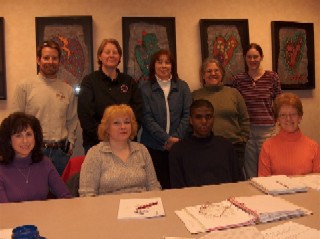The Warning Project
The Warning Project
 PI: Eve Gruntfest, Ph.D. & Charles Benight, Ph.D.
PI: Eve Gruntfest, Ph.D. & Charles Benight, Ph.D.
Funding: $422,000.00 National Science Foundation grant
Project Description: In the last twenty years, meteorological and hydrological knowledge of short-fuse warning disasters has improved dramatically. Forecasting lead-times have increased and billions of dollars have been spent modernizing the National Weather Service. Concurrently, the social science critical to translating the new knowledge into improved responses and reduced losses is missing. The benefits from increasing lead-times will be enhanced by theoretically framed social science producing more effective warning responses.
Few studies have explored how technological innovations, increased population mobility, an increasingly information-dependent society, and greater population diversity affect the ability to warn communities effectively. No studies have drawn from the public health literature to help understand how these factors interact to influence warnings.
This study looked at warning perceptions for flash floods and tornadoes in Denver Colorado and Austin Texas residents. It Provided a unique interdisciplinary study between Geography and Psychology, while looking at role of previous trauma on warning perceptions. The primary goals of the study included:
- Develop an enhanced understanding of the warning process by investigating public and private sources of warning information.
- Investigate how the changing demography of the U.S. influences public responses to warnings.
- Evaluate the use and potential of new technologies for warning perceptions and responses.
- Critically evaluate the construct of "false alarms" within short-fused disasters.
- Evaluate the utility of social cognitive theory as a framework for understanding the individual difference factors that predict disaster warning response.
Publications
- Benight, C. C., Gruntfest, E., Hayden, M., & Barnes, L. R. (2007). Trauma and short-fuse weather warning perceptions. Environmental Hazards,7, 220-226.
- Hayden, M., Drobot, S., Radil, S., Benight, C. C., Gruntfest, E., & Barnes, L (2007). Information Sources for Flash Flood Warnings in Denver, CO and Austin, TX. Environmental Hazards 7, 211-219.
- Drobot, S., Benight, C. C., & Gruntfest, E. (2007). Risk factors for driving into flooded roads. Environmental Hazards, 7, 227-234.
- Barnes, L. R., Gruntfest, E. C., Hayden, M. H., Schultz, D. M. & Benight, C. C. (in press). False Alarms and Close Calls: A Conceptual Model of Warning Accuracy. Weather and Forecasting.
Contact: Dr. Charles Benight cbenight@uccs.edu